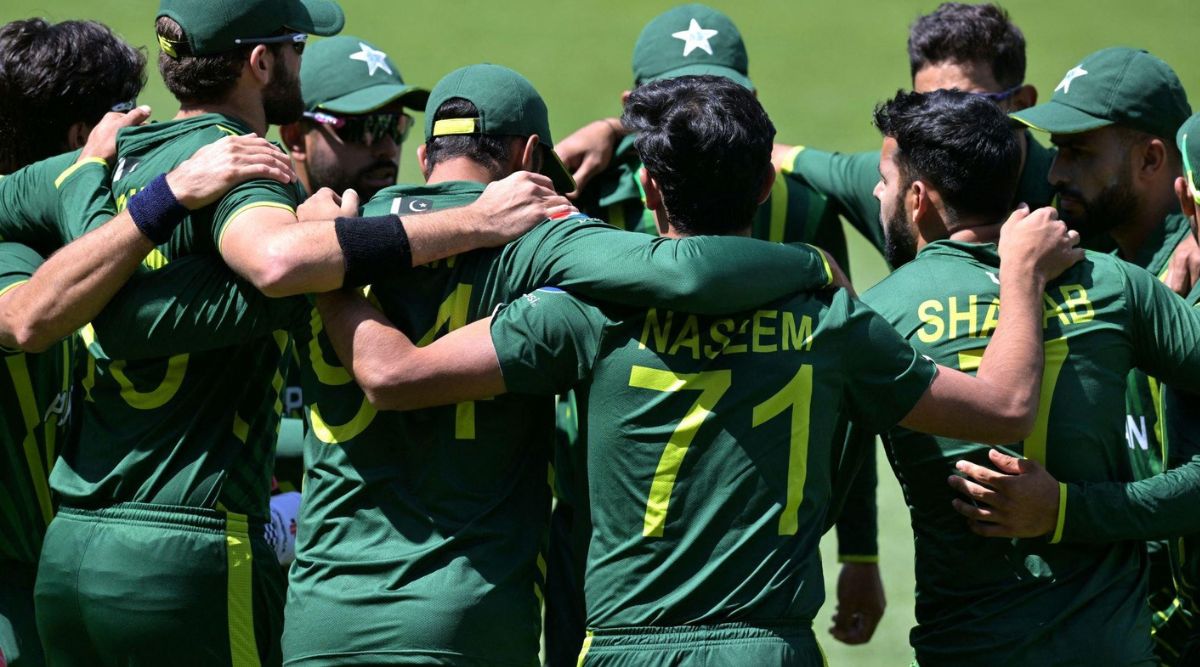Couple of days ago, L Balaji, former India seamer and CSK’s bowling coach, would highlight a trait of Sam Curran that would be visible in his first over in the world cup final against Pakistan.
- Advertisement -
“If there is no swing on offer, he will right away go around the stumps. His angles of release, both over and around, are always varying; small tweaks he has made but very effective,” Balaji had told this newspaper.
In his very first over in the final, Curran came from around the wicket to the right-handed Muhammad Rizwan, bowled a wobbled-seam delivery at a wider length that nipped back in, taking the inside edge off an attempted cover drive to knock over the stumps. In the later stages, as Shan Masood built up momentum, Curran kept a tight line and swung the ball away from the left-hander, who lofted a flick right into the hands of deep mid-wicket. Two overs later, Mohammad Nawaz would fall to a similar ball, rounding out Curran’s figures at 3-12, sealing his player of the match performance in the final, and player of the tournament performance in the World Cup.
The 24-year-old Curran, son of the late Zimbabwean star cricketer Kevin, was the team’s best bowler, taking 13 wickets at an average of 11.38 with an overall economy rate of 6.52. He was put into all kinds of positions – to get the most out of the new ball in the powerplay, go for wickets in the middle overs, or curb runs at the death – and produced a fine display. His performances with the ball, in essence, was vindication of the approach of coach Matthew Mott and skipper Jos Buttler in building this World Cup-winning side.
- Advertisement -
Curran’s greatest strength remains his ability to consistently hold the fuller lengths and get the ball to swing. Not to say that he cannot bowl back of the length at all, having shown considerable improvement and versatility over the years, but his wicket-taking aggression, arising from his ability to generate swing, was crucial to England’s tactics with the ball.
Curran’s approach is not one of guaranteed success though. Against India in the semifinal, Buttler turned to Curran for a wicket despite Hardik Pandya looking comfortable against the fuller length. The 24-year-old tried going for harder lengths, but saw his deliveries sail over the boundary, and when he tried to go fuller, he ended up putting in half volleys for Pandya to finish. He ended 0-42 after bowling a full quota on the day.
This was a calculated risk though, built on the back of England’s plethora of options with the ball. Curran could afford to be expensive when Woakes and Jordan had eliminated India’s top order, and Adil Rashid’s outstanding 1-20 had cleaned up Suryakumar Yadav and curbed runs in the middle overs. His ability to find swing – at the lengths and pace at which he usually bowls – made him an elite bowling option in Australian conditions, where batsmen across the board struggled against left-arm pace.
- Advertisement -
His place in the team, however, is not solely reliant on that strength, like Arshdeep Singh or Mitchell Starc. He’s a handy batsman too, with a career average of 22 and strike rate of 150 in the IPL, but with three other allrounders capable of pinch-hitting – Ben Stokes, Moeen Ali, and Liam Livingstone – his place in the team was not solely reliant on that either, like Hardik Pandya or Marcus Stoinis.
England’s sheer number of options gives a player like Curran the freedom to do what he does best, and at times, also fail.
Their ability to take these risks comes from an approach that is more reliant on options and balance than it is on specialists and star power. Buttler and Alex Hales can afford to be aggressive in the powerplay knowing they bat so deep, Stokes can afford to play the match situation rather than be the destructive middle-order batsman he has been in the past to round out run chases, knowing the likes of Ali and Livingstone are to follow, and Rashid can continue to put in loopy, spinning, slower deliveries knowing that his side can always turn to their fast bowlers if there is no turn in the pitch.
- Advertisement -
It is this belief in team balance, and the shaping of a team built on options that can provide valuable – small or big – contributions, that has been the underlying theme of England’s emergence as the world’s premier white-ball team. In doing so, they may have created a blueprint for others to follow.





